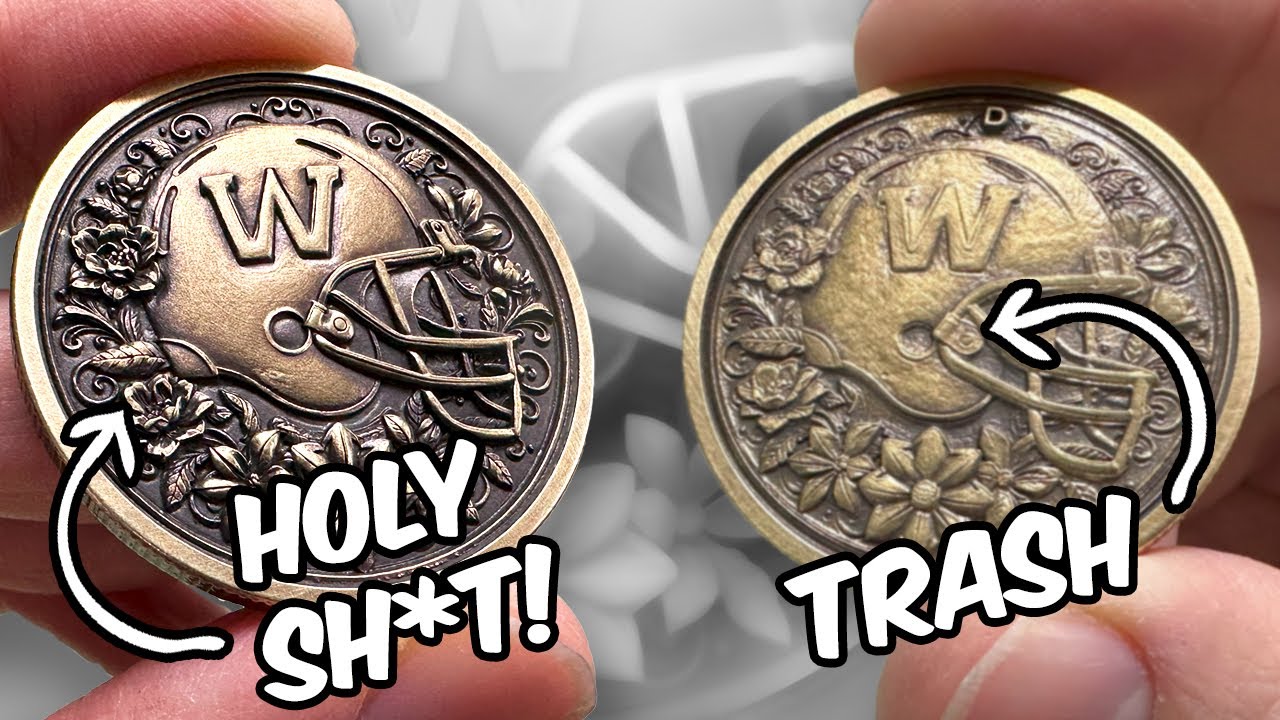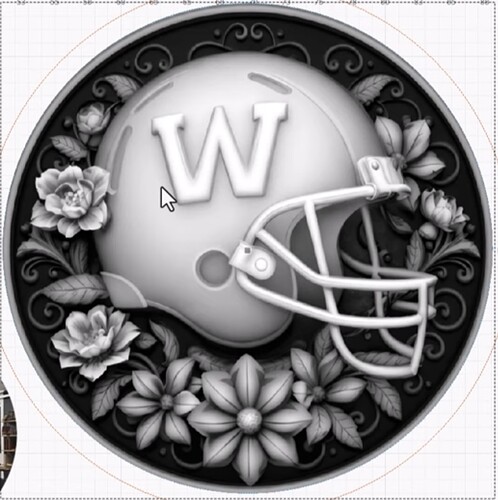This is pretty nice.
I feel so inadequate…
Yeah, I saw that and now I want to try it.
Oh man, that looks great!
WOW, I have never tried generating a height map, but this sure does look nice! I will probably need to wait a little longer until they improve the software some more and even a non-techie can do it. Something to look forward to.
#1 he is doing Brass!?
#2 He is engraving horizontal, vertical, +45, and -45 degrees!? ![]()
#3 That is a great depth map to start with. I think I would use Gimp to sharpen it up. Those first two might work better on a photograph, but they lost more details than they gained. The original AI put some holes above the “W” and all 3 rounded the sharp edge. My first thought was to dump the holes.
All 3 went dark around the “W” making it a dent in the side of the helmet. Where the face guard attached was a lot of detail lost by even the best one.
He even commented that he wanted the highs and lows to be concentrated with less mid-gray. I often see that the full range of black to white is not taken so make that happen and Gimp will concentrate the ends of the grays but that is a very instance-related issue that can (and did in that case) lose details.
I was very impressed that the laser outlined each step in the grayscale. With 256 steps that is hard but those outlines highlight where subtle detail was lost.
He pumped the contrast and extended the full dynamic range in post processing. He talked about healing the holes.
I think I spotted “320 passes” at one point. And that it’s a 60W laser. Commercial/industrial class.
Obviously brass is not something for the GF but the depth map stuff is interesting. If I was doing this for profit or had money like I used to, I might be interested in the software. I’m sure this will trickle down into the public domain, though.
A different hole that is not in the original.
I think it was an AI artifact. Kind of like the holes that scanner software sometimes leave when you don’t get enough passes of the scanner.
I agree, but my point was that it was a very good grayscale from the start. If it was a plain B&W then the gadgets could be very useful, but as a 3D grayscale (or close) there is little to do and a global AI would just lose information.
This is typical, we are generally not able to understand the gradient of the curve we’re on. If you see artifacts now,[1] they’ll be gone in 6 months. The pace of innovation and improvement in AI assisted graphic tools is astounding. I’d say don’t get behind but unless it’s your profession you already are.
It’s natural to be conservative and want your skills to be as necessary as they used to be, but that’s just not the reality. The good news is that any skills you have in an area where AI is becoming prominent may give you a leg up on how to use those AI tools to best effect. It’s all about getting on it sooner than later so that you’re not stuck in antiquated slow ways of doing things.
I just had an object lesson in this when I updated my inkscape hershey font list. My gut was “write a php script to make it” which turned into “ask GPT to make the php script, and I’ll edit it” to “wait a second, give it an example of what I want and the list of items, and have it build the whole thing.” It took about 3 seconds. Literally. My old-school programming skills would have been fun to bust out but they are entirely supplanted for a one-off project like that.
which is debatable. The dark shadow on the W is necessary to get a good 2.5-D engrave ↩︎
That aligns with how I feel about tech in general. I don’t use it for the sake of it, I use it because it makes life easier. Simpler. More efficient.
That is far nore meta than my point. I was just noting that the original image was generated by AI to be a gray scale height map from the start. So using an AI to turn a height map into a height map as an example was not such a good choice.
No, it was a greyscale image of a 3d rendering (or at least an AI approximation of one). This is also called an occlusion map or a white model. These are the types of files you use to make those fake 3d engraves that are actually pretty much flat:
They produce something like this:
By contrast, in the example from the video you can see that it is radically transformed by the end to be an approximation of a true 2.5-D height map.
Original:
End result:
More info:
And again the original in this example is neither an occlusion map nor a height map because it’s AI generated. It’s simply imitating an untold number of 3D renders of white models that the AI model found during training.
So while I can’t say exactly what the original from the video is, I can say it definitely is not a 2.5-D heightmap model — and technically, neither is the end point since it’s also AI generated. It’s only optimized to be like other engravable 2.5D examples by a very specifically trained AI model.
Good result though!
This topic was automatically closed 32 days after the last reply. New replies are no longer allowed.


